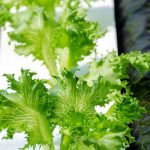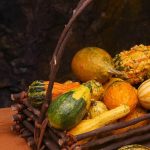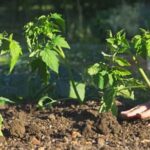Are you interested in starting a vegetable garden in Australia? Whether you’re a beginner or an experienced gardener, these vegetable gardening tips Australia will help you make the most of your gardening experience.
Australia’s diverse climate and soil conditions make it an ideal place for vegetable gardening, with a wide variety of produce that can be grown throughout the year. Understanding the unique climate and soil in Australia is essential for successful vegetable gardening.
In this article, we will explore everything you need to know about vegetable gardening in Australia, from understanding the climate and soil, to the best vegetables to grow in each season. We’ll also provide tips for preparing and maintaining your garden, as well as techniques for watering, pest management, maximizing space, and harvesting and storing your produce.
By the end of this guide, you’ll be equipped with all the knowledge you need to embrace the joy of vegetable gardening in Australia.
Understanding the Climate and Soil in Australia for Vegetable Gardening
Australia is known for its diverse climate and soil conditions, which can pose unique challenges for vegetable gardening. Understanding these factors is essential for successful gardening in the country.
Climate Considerations
Australia’s climate varies from region to region, with different areas experiencing different temperature ranges, rainfall patterns, and seasonal changes. For vegetable gardening, it’s important to consider the specific climate of your location and choose vegetables that are well-suited to the local conditions. In warmer regions such as Northern Australia, heat-tolerant vegetables like tomatoes, peppers, and eggplants thrive, while cooler regions may be better suited for leafy greens and root vegetables.
Soil Types
Australia has a wide range of soil types, including sandy soils in coastal areas, clay soils in inland regions, and fertile volcanic soils in some areas. Before starting a vegetable garden, it’s crucial to understand the soil type in your area and take steps to improve its fertility and structure if necessary. Adding organic matter like compost or manure can help improve soil quality for vegetable gardening.
Adapting to Climate Change
With the effects of climate change becoming more apparent, Australian gardeners are facing new challenges such as unpredictable weather patterns, extreme heat events, and increased pest pressure. To adapt to these changes, vegetable gardeners can explore innovative techniques such as water-wise gardening, shade structures for heat protection, and natural pest management strategies.
By understanding the climate and soil conditions specific to their region, Australian vegetable gardeners can make informed choices about what to plant and how to care for their gardens. With careful consideration of these factors and implementation of appropriate techniques, vegetable gardening enthusiasts can enjoy a bountiful harvest year after year.
Best Vegetables to Grow in Australia
Australia’s diverse climate provides an excellent environment for growing a wide range of vegetables throughout the year. When it comes to vegetable gardening tips Australia, it’s important to understand which vegetables thrive in the various seasons. In the cooler months, from March to October, vegetables such as broccoli, carrots, lettuce, onions, and peas are ideal for planting. During the warmer months, from November to February, popular choices include tomatoes, zucchini, cucumbers, peppers, and eggplants.
In addition to seasonal variations, it’s essential to consider the specific climate and soil conditions in different regions of Australia. For example, in tropical Northern Australia, vegetables like sweet potatoes, okra, and snake beans are well-suited to the hot and humid conditions. On the other hand, in the cooler southern regions of Australia, root vegetables like potatoes and pumpkins thrive during the winter months.
One way to stay on top of the best vegetables to grow in Australia is by consulting a local gardening guide or getting advice from experienced gardeners in your area. By choosing vegetables that are well-suited to your particular region and aligning with the seasons, you’ll set yourself up for a successful vegetable garden. It’s important to do thorough research and planning before embarking on your vegetable gardening journey in Australia.
Tips for Preparing and Maintaining a Vegetable Garden in Australia
When it comes to vegetable gardening in Australia, preparation and maintenance are key to success. Before starting your vegetable garden, it’s important to consider the climate and soil conditions of your specific region in Australia. Understanding these factors will help you choose the right vegetables to grow and implement the best practices for maintaining a healthy garden.
One of the first steps in preparing a vegetable garden in Australia is ensuring that the soil is fertile and well-draining. Adding organic matter such as compost or manure can improve the soil structure and provide essential nutrients for your vegetables. It’s also important to test the pH levels of your soil and make any necessary adjustments to create an optimal growing environment for your plants.
Once your garden is established, regular maintenance is crucial for healthy plant growth. This includes tasks such as weeding, mulching, and monitoring for pests and diseases. Mulching not only helps with moisture retention but also suppresses weed growth. When it comes to pests and diseases, early detection and prevention are key. Regularly inspect your plants for any signs of trouble and take appropriate measures to address any issues that arise.
In addition, providing proper support for climbing vegetables like tomatoes or beans can help maximize space and ensure better air circulation around the plants. Additionally, rotating your crops each season can help prevent disease buildup in the soil and maintain overall soil health. With these vegetable gardening tips specific to Australia’s climate and soil conditions, you’ll be on your way to a successful harvest in no time.
Watering and Irrigation Techniques for Vegetable Gardening in Australia
When it comes to vegetable gardening in Australia, one of the most crucial factors to consider is water management. The Australian climate can be quite harsh, with long periods of drought and intense heat. Therefore, utilizing effective watering and irrigation techniques is essential for the success of your vegetable garden.
One of the best watering practices for vegetable gardening in Australia is the use of drip irrigation systems. These systems ensure that water is delivered directly to the base of plants, minimizing evaporation and water wastage.
Additionally, using mulch around your plants can also help retain soil moisture and reduce the frequency of watering. It’s important to water your vegetable garden either early in the morning or late in the afternoon to prevent water loss through evaporation during the heat of the day.
Another valuable tip for proper irrigation in Australian vegetable gardens is to group plants with similar water needs together. This technique, known as hydrozoning, allows you to optimize your watering schedule by targeting specific areas of your garden based on individual plant requirements. For example, leafy greens may require more frequent watering than root vegetables.
Proper irrigation and watering techniques are vital for successful vegetable gardening in Australia. By implementing these strategies, you can conserve water, promote plant growth, and ultimately enjoy a bountiful harvest from your Australian vegetable garden.
| Watering Technique | Benefit |
|---|---|
| Drip Irrigation Systems | Minimizes evaporation and water wastage |
| Mulching | Retains soil moisture and reduces watering frequency |
| Hydrozoning | Optimizes watering schedule based on plant needs |
Pest and Disease Management in Australian Vegetable Gardens
When it comes to vegetable gardening in Australia, managing pests and diseases is a crucial aspect of maintaining a successful garden. The country’s diverse climate and soil conditions can create the perfect environment for various pests and diseases to thrive. However, with the right knowledge and proactive measures, gardeners can effectively protect their crops from potential harm.
Here are some valuable tips for pest and disease management in Australian vegetable gardens:
1. Identify common pests and diseases: Familiarize yourself with the typical threats to vegetable gardens in your specific region of Australia. Common pests include aphids, caterpillars, and whiteflies, while diseases such as powdery mildew and blossom end rot can also pose significant challenges.
2. Implement natural pest control methods: Consider using beneficial insects like ladybugs or lacewings to naturally control pest populations in your garden. Additionally, companion planting techniques that involve strategically placing certain plants together can help deter pests.
3. Practice good garden hygiene: Regularly remove any damaged or diseased plant material from your garden to prevent the spread of pathogens. Clean gardening tools, pots, and containers regularly to minimize the risk of introducing diseases to your garden.
4. Utilize organic pesticides sparingly: While chemical pesticides may offer quick solutions, they can also harm beneficial insects and disrupt the overall balance of your garden ecosystem. Opt for organic pesticide options when necessary, and always follow proper application guidelines.
By implementing these pest and disease management strategies, you can help safeguard your Australian vegetable garden against potential threats while promoting a healthy growing environment for your crops.
Innovative Techniques for Maximizing Space in Australian Vegetable Gardens
When it comes to vegetable gardening in Australia, maximizing space is essential, especially if you have a smaller garden or limited outdoor area. Here are some innovative techniques for making the most of the available space in your Australian vegetable garden:
1. Vertical Gardening: Utilize vertical space by growing vining vegetables such as tomatoes, cucumbers, and beans on trellises or cages. This not only saves ground space but also allows for better air circulation and sunlight exposure.
2. Raised Beds: Consider constructing raised beds to make the most of your garden space. Not only do they provide better drainage and soil quality, but they also allow you to plant more in a smaller area by closely spacing your crops.
3. Container Gardening: If you have limited ground space, container gardening is an excellent option. Use pots, hanging baskets, or even repurposed items like old buckets or crates to grow herbs, lettuce, peppers, and other vegetables. This way, you can move them around to take advantage of the best sunlight throughout the day.
4. Intercropping: Maximize space by planting different vegetables together that have compatible growth habits and harvesting times. For example, grow quick-growing radishes between rows of slower-growing crops like carrots or beets to make use of the spaces between plants.
5. Succession Planting: Plan multiple rounds of planting throughout the season to ensure a continual harvest from the same space. Once one crop is harvested, replant with a new crop so that there’s always something growing in every area of your garden.
By implementing these innovative techniques for maximizing space in your Australian vegetable garden, you can make the most of your available area while still enjoying a bountiful harvest of fresh homegrown produce.
Harvesting and Storing Your Vegetable Garden Produce in Australia
Once your vegetables are ready for harvest, it’s important to know the best practices for harvesting and storing your produce in Australia. Proper harvesting and storage techniques can help you maximize the lifespan of your vegetables and ensure that you can enjoy your garden’s bounty for as long as possible.
Harvesting Techniques
When it comes to harvesting your vegetables, timing is everything. Different vegetables have different ideal harvest times, so be sure to research and understand the specific harvest requirements for each type of vegetable you are growing. For example, tomatoes should be harvested when they are fully ripe and have a deep, even color, while leafy greens like lettuce should be harvested when they are young and tender.
Storing Your Produce
Proper storage is essential for preserving the quality of your harvested vegetables. In Australia’s varying climate, it’s important to consider the best methods for storing your produce. Some vegetables like root crops (e.g. carrots, potatoes) do well in cool and dark environments with high humidity, while others like tomatoes and peppers prefer slightly warmer temperatures. Be sure to store each type of vegetable according to its specific needs to prolong its shelf life.
Preserving Techniques
In addition to traditional storage methods, consider exploring various preserving techniques such as canning, pickling, or freezing to extend the lifespan of your vegetable harvests. These techniques can come in handy especially during periods when certain vegetables are not in season or during times when you have an abundance of produce from your garden.
By mastering these harvesting and storing techniques tailored for Australian conditions, you’ll be able to enjoy the fruits of your labor long after they’re picked from the garden.
Conclusion
In conclusion, vegetable gardening in Australia offers a wealth of opportunities for individuals to connect with nature, produce fresh and healthy food, and engage in a rewarding and sustainable activity. By understanding the unique climate and soil conditions in Australia, as well as utilizing the best vegetables to grow based on seasonal guides, individuals can maximize their success in vegetable gardening. Implementing tips for preparation, maintenance, watering, irrigation, and pest management will help ensure a bountiful harvest.
Furthermore, innovative techniques for maximizing space in Australian vegetable gardens can enable individuals with limited area to still enjoy the benefits of cultivating their own produce. Whether it’s vertical gardening or companion planting, there are numerous ways to make the most out of any available space. Additionally, proper harvesting and storage practices should not be overlooked to preserve the hard-earned fruits of one’s labor for future enjoyment.
Ultimately, embracing the joy of vegetable gardening in Australia is not only about growing food but also about nurturing a sense of pride and accomplishment as well as connecting with the environment. With the right knowledge and dedication, anyone can experience the satisfaction of watching their garden thrive and reap the delicious rewards it has to offer.
Embracing vegetable gardening tips in Australia enables individuals to embark on a fulfilling journey towards self-sustainability while promoting environmental stewardship within their communities.

If you’re looking to get into vegetable gardening, or are just looking for some tips on how to make your current garden better, then you’ve come to the right place! My name is Ethel and I have been gardening for years. In this blog, I’m going to share with you some of my best tips on how to create a successful vegetable garden.





